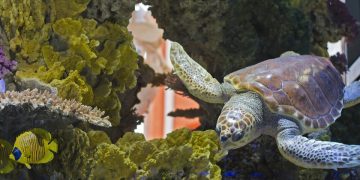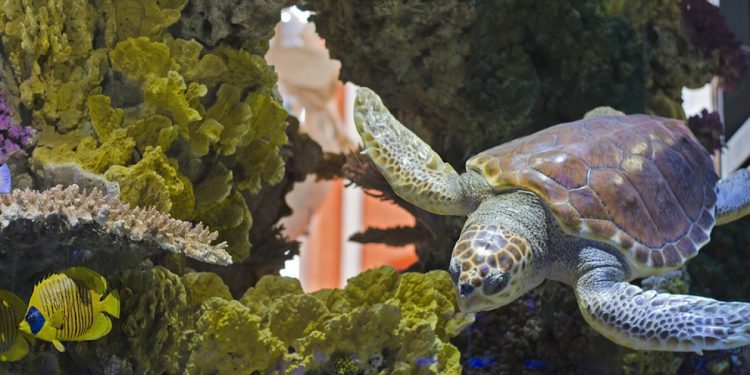Throughout its life in your company, your turtle should be happy and fulfilled. For this, it must evolve in a healthy and adapted environment, in connection with what it could find in nature, in its environment of origin. The layout of its living space is important, whether for an aquatic or terrestrial turtle. Here are some tips on this.
How should a turtle’s habitat be arranged so that the animal can live in the best conditions? What accessories and equipment to provide in your terrarium or aquarium? We review it all.
Choose a terrarium or an aquarium
First, before thinking about setting up your living space, you should buy the right habitat for your turtle. An aquarium for your aquatic turtle and a terrarium (or the creation of an enclosure if the animal is large) for your land turtle.
The aquarium should be spacious. Its dimensions must be 7 times greater than the carapace length of your reptile. The terrarium is suitable for your juvenile or small breed tortoise. Its length must be at least 1 meter and its depth greater than 50 centimeters. You will prefer a terrarium with side opening and PVC, but especially not in wood. As for the substrate, which is essential for the tortoise, you will opt more for earth rather than wood chips.
Aquarium accessories and their layout
There are many elements that should not be overlooked in your aquatic turtle’s aquarium. Thus, you will not forget a UV tube (at least 5), a heating lamp, a thermostat, an osmosis unit and a filter. These are essential elements that will help maintain your turtle’s good health and well-being.
In addition, your turtle’s aquarium will need to receive a few plants to place in the water. Avoid putting them too close to the edge, because your reptile could climb on them and try to escape. Do not forget to have aquatic hiding places, which your turtle loves. Outside, you will place a dry corner with sand to imitate its natural environment.
terrarium accessories
Here again, several elements are essential to its maintenance in good health. As in water, a tortoise must live in a heated environment using a heating mat or cables located below the terrarium. A heat lamp can also be placed above, being careful not to risk burning your pet. A fluorescent UV tube will be installed to limit the loss of the sun’s rays and, even if it is a reptile that evolves on land, a water point will be essential. Be careful that it is not too deep, because your turtle could drown.
A hiding place must be installed and you will scatter plants everywhere, preferably natural ones.
Enclosure accessories
If you live in an area that’s warm enough all year round, or at least for much of it, your turtle won’t need to come inside and have an enclosure set up there that can take a lot of space. square. Outside, there is no need for a heat lamp or UV lamp. You will install a fence to prevent your reptile from escaping. Then, the accessories found in the terrarium will have to be transposed outside: plants, one or more hiding places, a shelter with hay and lettuce available. Finally, you can install a small greenhouse where your turtle will take refuge in the event of a drop in temperature. A large bowl of water should not be forgotten, to allow him to get wet and hydrate from time to time.
Read also: Keeping your turtle
In summary
The layout of a terrarium or an aquarium is much the same. Your turtle will need plants, hiding places (or shelters) but also and above all something to allow its environment to conform to what it would find in nature. For the tortoise, the enclosure is by far the least restrictive (even if you need space in your garden) because it does not require constant monitoring in terms of temperature and sunshine.












